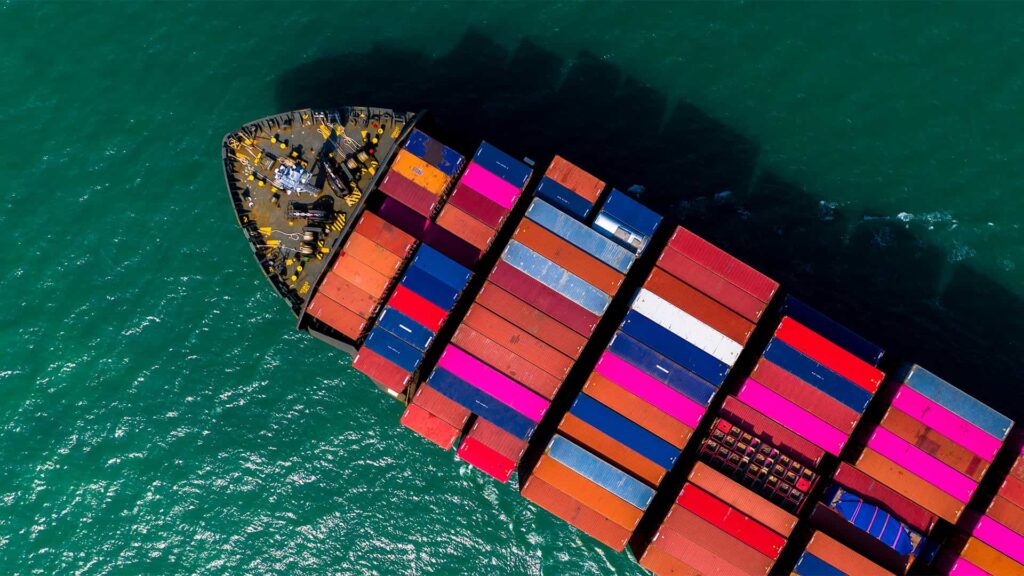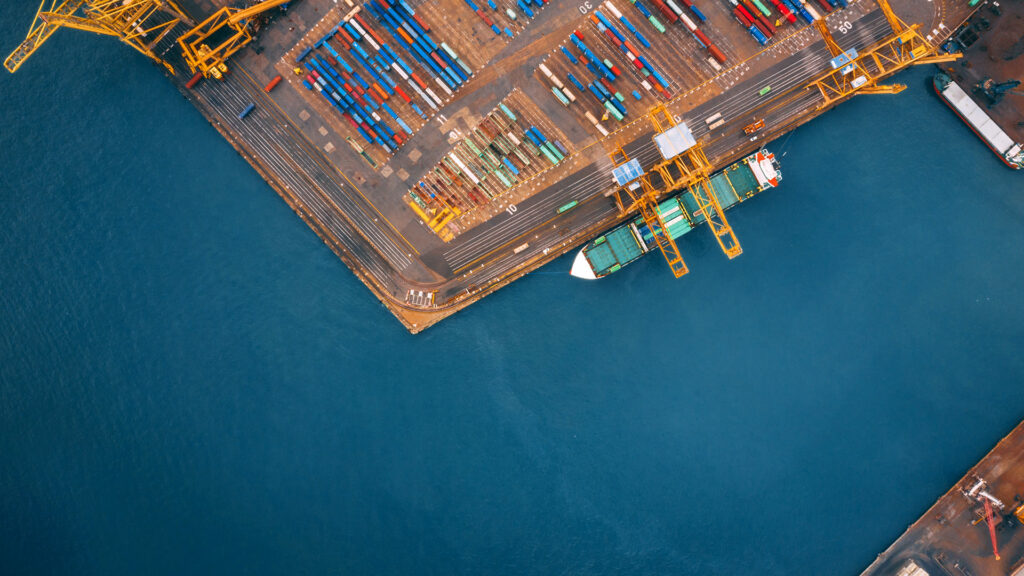
Waste not, want not
On 1 January 2013, new MARPOL Regulations came into force with regard to the disposal of garbage from ships at sea, largely prohibiting the practice. As a result, it will become common practice for ships to send their garbage to shore-based reception facilities. MARPOL applies to ships via their flag state, and port and terminals via the national legislation.
This article first appeared in the March 2014 issue of Port Strategy and is reproduced with permission. www.portstrategy.com www.portstrategy.com
MARPOL Annex V Regulations not only impact on what could be classed as ‘traditional garbage’, but also concern the issue of hold washing water removal and discharge of ‘cargo residues’; remains of cargo in wash water are defined in the Regulations as ‘cargo residues’. This is likely to be a particularly important issue for ports that operate in the bulk cargo trades, where hold cleaning between cargoes is a regular occurrence, and where cargo residues do remain and large quantities of washing water can be generated.
It is reasonably straightforward to define traditional garbage but the issue of hold washing water in particular needs further explanation. The starting point is to consider the nature of (1) the cargo carried; and (2) the hold cleaning chemicals used, and determine if either the cargo itself or the hold cleaning chemicals used are harmful to the marine environment as defined in MARPOL. The Annex V guidance notes state that, if the cargo meets certain criteria listed in the UN Globally Harmonized System for Classification and Labelling of Chemicals, then the cargo is harmful to the marine environment.
In terms of the cargo itself, the shipper has an obligation to declare whether or not the cargo is harmful when providing the information required by section 4.2 of the IMSBC Code. If the cargo is classified as harmful to the marine environment, then the hold washing water (i.e. cargo residues) has to be kept onboard and safely discharged into reception facilities ashore in all cases (subject to the interim measure applying, please see below). If cargoes that are harmful are carried, then this has to be fully documented in onboard records/the garbage book.
Hold the line
Whether hold cleaning materials are harmful depends on whether they contain any carcinogenic, mutagenic or reprotoxic components. This should be clear from the Material Safety Data Sheet or product information, which will be produced by the manufacturer and should be supplied by the person using the chemical. If the cargo is not harmful, but the holds were cleaned with hold cleaning chemicals which are harmful, then it is likely that the hold washing water would have to be kept onboard and discharged into reception facilities ashore.
If the cargo (and any cleaning chemicals used) are not harmful to the marine environment then hold washing water can be discharged at sea, within areas in which discharge is allowed, subject to any other MARPOL requirements. If the ship is in a MARPOL ‘Special Area’, discharge into the sea is only permitted (i) if the port of departure and next port of destination are both within a Special Area AND (ii) no adequate reception facilities are available at the port of departure and destination.
MARPOL Special Areas are the Baltic Sea, North Sea, Mediterranean, the Gulfs Area, Wider Caribbean Region and the Antarctic Sea. Eventually, once shore reception facilities are available in the Black Sea and Red Sea, these regions may be classified as Special Areas for the discharge of garbage.
As an interim measure IMO Circular, MEPC.1 Circ. 810, provides dispensation for ships to discharge cargo wash water and residues which contain materials classed as HME until 31 December 2015 where Adequate Port Reception Facilities are unavailable and providing certain criteria are met. This measure was brought in because of problems in obtaining HME cargo declarations.
The IMO Circular stated:
“Further ports and terminals receiving cargoes classified as HME are urged to provide adequate port reception facilities, including for residues contained in washwater. In the absence of such facilities, to minimise residues discharged under paragraph 3, terminals should facilitate the discharge of all solid bulk cargo residues ashore, including hold sweepings.”
Standard forms
There is also a reporting system in place for ship’s masters to report inadequate shore reception facilities (see IMO Circular, MEPC.1 Circ 469), standard forms for ships to provide advance notification regarding use of shore garbage facilities (IMO Circular, MEPC.1 Circ 644) and a standard waste receipt to be issued by the receiver of the garbage (IMO Circular, MEPC.1 Circ 645).
Ultimately it is the master/owner who will have to take a decision about whether cargo residues/cargo hold washing water can be discharged into the sea or whether they must be discharged ashore and they will be the parties targeted by the authorities for breach of the regulations. In financial/ contractual terms the (i) requirement to provide information on whether or not cargoes/hold cleaning chemicals are HME and (ii) the time and cost of discharge into shore reception facilities will be for charterers/cargo interests.
The latest BIMCO Marpol clause (see the BIMCO Revised Hold Cleaning/ Residue Disposal Clause for Time Charters) puts responsibility firmly on charterers. Therefore port and terminal operators may find themselves dealing with charterers or cargo interests direct, as they may take on responsibility for disposal since they will ultimately be bearing the cost.
Since the regulations are relatively new it is difficult to foresee all of the practical and legal implications that the new system for waste disposal will have.
One obvious effect of the regulations on port and terminal operators will be to significantly increase demand from owners/vessel operators and charterers/cargo interests for reception facilities for cargo residues and cargo hold washing water (as well as traditional garbage) that is both harmful and not harmful to the marine environment. This will require major investment in new facilities (ideally at or near the port) to discharge, store and ultimately treat/dispose safely of such ‘garbage’.
One problem is that the range of harmful materials that a port may have to deal with is potentially wide and if those materials are contained in cargo residues or washing water then significant capacity may be needed. Ports may need to identify what type of ‘garbage’ they are most likely to have to deal with and estimate how demand may increase.
Smaller problems
It may also prove unviable for some smaller ports to be able to provide the array of environmentally sound solutions that will be required to receive differing HME cargo residues and deal with them in compliance with other land-based environmental legislation. They may have to decide to provide more limited garbage facilities for ‘popular garbage’ whereas major ports are more likely to provide a one-stopshop.
Whether or not governments will intervene to ensure the adequacy of port reception facilities may vary from country to country. Information about port reception facilities is available from the IMO GISIS Port Reception Facility Database.
One upside that could be considered for ports is the earning potential of reception facilities. Disposal of garbage will be a growth industry and ports and terminals may be able to differentiate themselves from their competitors by offering a fast and reasonably priced service. In the same way that some ports are known as bunkering ports it may be that ports in key geographical positions develop a reputation as somewhere where garbage disposal of HME garbage can be efficiently handled.
However, as noted above, the IMO has already granted some leeway to the implementation of the Regulations in IMO Circular, MEPC.1 Circ. 810. It is conceivable that further extensions could be granted if port reception facilities are still not adequate at the end of 2015. One difficulty with this potential uncertainty is that it may make it more difficult for ports and terminals to justify investment in new facilities if potential customers are not going to be required to use them.
Compliant pays
Additionally, facilities must be compliant. Port reception and treatment facilities should conform with national Marpol implementing legislation, national and local permitting schemes or licensing required by environmental and public health laws concerning waste handling. Use of these facilities must be arranged so it does not interfere with everyday port or terminal operations. They should also be situated so that wastes and residues removed from ships cannot readily enter the water, otherwise the purpose of the Regulations will be negated.
The service offered also needs to meet customer requirements. The IMO Circular, MEPC.1 Circ 469 contains a proforma table for ship’s masters to complete, which lists potential problems including:
- No facility available
- Undue delay
- Use of facility technically not possible
- Inconvenient location
- Vessel had to shift berth involving delay/cost
Generally port and terminal operators may find it helpful to refer to IMO Circular MEPC.1 Circ. 671 which is a Guide to Good Practice for Port Reception Facility Providers and Users. Ports/terminals will also need to make sure that their insurance cover and contracts reflect any new facilities/ tasks undertaken.
For more information, please contact Rory Butler, Partner, on +44 (0)20 7264 8310, or rory.butler@hfw.com, or your usual contact at HFW.











